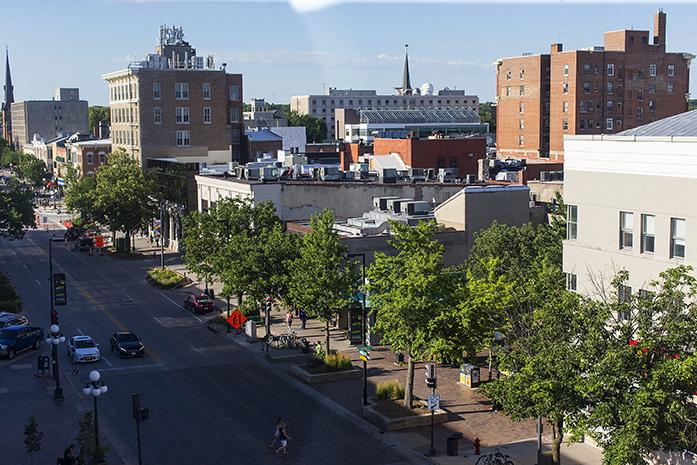By Dot Armstrong
The University of Iowa dominates the center of Iowa City. Its campus extends across the river, with buildings of all shapes and sizes sprawling toward Coralville.
Most residents, such as me, navigate by campus landmarks, looking to the Pentacrest, the hospital, and the dorms to guide them around the city. Academic and residential buildings alike define the contours of the Iowa City landscape. The dorms are an especially visible — and vital — component of the campus. Home to more than 6,000 students, buildings such as Burge, Mayflower, and Stanley provide living quarters for numerous populations, according to the UI Housing & Dining website. New development has been crucial in the housing department lately; the skeleton of a half-constructed dorm stands out on the campus skyline, growing to accommodate the exponential increase in the student population.
The UI is big and getting bigger. And that’s good, right? Not if the incoming students are left homeless. Though the UI is a state school lauded for its largeness, the recent trends in recruitment have stressed the school’s carrying capacity. Increased advantages for in-state students are forcing the campus population through the roof; even UI President Bruce Harreld recognizes the problematic size of the incoming class this fall. The university has considered its options for housing expansion for quite a while, evidenced by immense cubes such as Petersen and Catlett. These dorms, shiny and big as they are, can’t accommodate all the scholars. And construction takes time. The university — and the town that surrounds it — can only expand so far.
So, where are all of the Hawkeyes to go? Here’s the tricky part. Supposedly, the community exists in symbiosis with the university; because of the proximity of the school to town, it’s nearly impossible to circumvent a mutually supportive relationship between academia and suburbia. When dorms fail to meet students’ needs, students migrate off-campus to find other housing options. They occupy apartments and houses in commercial and residential areas of Iowa City — usually paying exorbitant prices for crappy dwellings.
How did this happen? The central concerns here are twofold: the corrupt landlords, and the university’s precipitate obsession with population growth.
First, sleazy property owners have us students right where they want us: Slumlords rip off students at their leisure because the dorms are overcrowded. The desperation of the dorm-less is palpable, and significant amounts of cash get sucked into the search for convenient apartments.
Universities aren’t businesses, and towns aren’t breeding grounds for hordes of intellectual 20-somethings. To keep the balance of school and city beneficial to both parties, the university should consider placing smarter caps on enrollment. Did Harreld consider the significant spatial repercussions of those recruitment initiatives before he rolled out the welcome wagon?
Incessant expansion does not assist quality education. Though more students mean more tuition money, more students simply mean more students. More students requiring more advisers, more teachers, more classrooms, more study spaces. More of everything isn’t a viable option after a certain point, especially with potential funding cuts looming on the horizon. The university’s focus ought to be on providing for sensible populations of carefully vetted incoming students, as well as supporting current students. Prioritizing rampant expansion only leads to a bloated school and an overwhelmed community.



